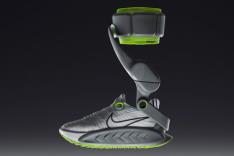Ask About Strategy
Some pace leaders shoot for even splits, running each mile at the same pace with slight modifications for hills. Run-walk leaders insert walk breaks every few miles. Others start out slower than goal pace, speeding up slightly over the course of the race and then dialing it back over the final miles. De Reuck suggests newbie marathoners and those with a slower time goal (five-plus hours) look for a group that incorporates walk breaks. Runners with a tendency to start too fast should join one that eases into the first miles. Just remember, the strategy should mimic what you've done in training. (Try these 5 Moves That Make You Run Faster on your own training days.)
More: 6 Tips to Find The Perfect Pace
Enjoy the Ride
Pace groups can be loud and feel congested. But you can't beat the camaraderie, says Blackford. "Having a group of runners next to you who are trying to qualify for Boston or break a PR is very different than simply running with 17,000 people," she says. "They can pull you through dark patches and give you motivation you can't give yourself."
Run Better
Pace-group etiquette dictates not crowding your pacer or others in the group and moving quickly through all the water stops.
More: Marathon Pacing: How to Run Your Best Race
Group Therapy
Ace pacer Star Blackford's tips for dealing with pack problems:
The Scenario: You can't find an appropriate group.The Solution: If your pace isn't offered, go to runnersworld.com/tools and plug your finish time into the Marathon Pace Band calculator for splits. Or check the expo: Vendors like Clif Bar often provide pace bands for any goal.
The Scenario: The group starts too fast.
The Solution: If you need a more gradual warmup, fall back, then try to slowly catch up. If the pacer is off, go it alone or run with the next, slower group.
The Scenario: The group is running too slow.
The Solution: In a marathon, wait until after mile 18 to pass. In a half, wait until mile five. The first miles should feel easy if you've trained properly.
The Scenario: You need to hit the port-a-potty or take a walk break
The Solution: Don't sprint to catch back up; the extra effort will haunt you later. Slowly try to reconnect over two to three miles.
More: How to Find a Race Pace That Works
 Sign up for your next marathon and figure out your race pace with our pace calculator.
Sign up for your next marathon and figure out your race pace with our pace calculator.- 2
- of
- 2
Get ACTIVE on the Go


Couch to 5K®
The best way to get new runners off the couch and across the finish line of their first 5K.
Available for iOS | Android







Discuss This Article